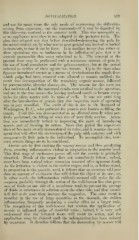Page 889 - My FlipBook
P. 889
DEVITALTZATION. 899
and was for many years the only mode of overcoming the difficulties
arising from exposures ; but the treatment—if it may be dignified by
this title—was confined to the anterior teeth. This was necessarily so,
as no appliances were then in use adapted to the posterior teeth. The
plan then adopted was that before described—destroying the pulp by
the actual cautery, or, by what was in more general use, hooked or barbed
instruments, to tear it out by force. It is needless to say that either of
these operations was so barbarous in its infliction of pain that it is
scarcely presumable that many submitted to it. The removal at the
present time may be performed with a minimum amount of pain by
the use of local anaesthetics and the galvano-cautery, but at the period
referred to neither of these agents was known. Up to the time when
Spooner introduced arsenic as a means of devitalization the canals from
which pulps had been removed were allowed to remain unfilled ; the
result was decomposition of the remaining organic matter, followed
by pericementitis, alveolar abscess, etc. The reasons for this were not
then understood, and the untoward results were ascribed to the operation,
and not to the true cause—the leaving unclosed canals to become recep-
tacles for eiiete matter with its train of evils. It was not until long
after the introduction of arsenic that this imperfect mode of operating
was in part remedied. The credit of this is due to Dr. Maynard of
Washington, D. C, who perfected the process noAV known as filling the
canals. Until this was demonstrated as an effectual remedy when per-
fectly performed, the filling of teeth was of very little service. Atten-
tion was immediately turned to improving the mode of introducing
arsenic and of limiting its action. Since that period the experience
derived has more clearly demonstrated its value, and it remains the only
agent that will effect the destruction of the pulp with certainty and with
comparatively little pain to the indiyidual. To accomplish this, how-
ever, certain things are to be considered.
Arsenic acts by first exciting the sensory nerves and then paralyzing
them, arousing inflammation violent in proportion to the amount used.
This first stage of excitement passes off', and the arsenic is gradually
absorbed. Death of the organ does not immediately follow ; indeed,
cases have been noticed where sensation returned after apparent death.
As the irritation is violent at the earlier stages, and is, as before stated,
in proportion to the quantity used, it follows that an overdose will pro-
duce an amount of excitation that will defeat the object of its use ; or,
in other words, the inflammation suddenly aroused will resist the ab-
sorption, probably through the action of the well-known law that pres-
sure of fluids on one side of a membrane tends to prevent the passage
of fluids or substances in solution upon the other side, and thus arsenic
will fail to do more than increase the congestion. The same result is
manifest in the use of large quantities in the stomach, the sudden
inflammation frequently producing a similar effect on a larger scale.
The recognition of this well-known fact rendere the application of
arsenic to inflamed pulps of doubtful value ; indeed, it is very well
understood that the irritated tissue will resist its action, and the
application must be delayed until the inflammation has been reduced
by treatment. It therefore follows that the destruction by arsenic will


